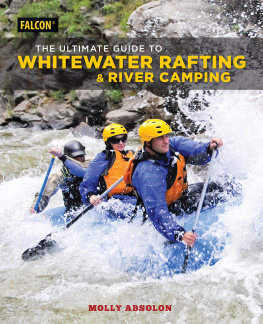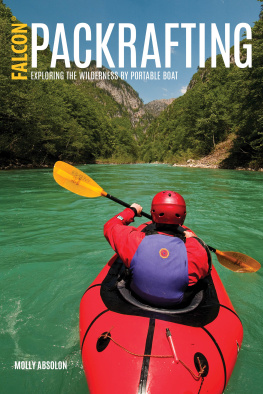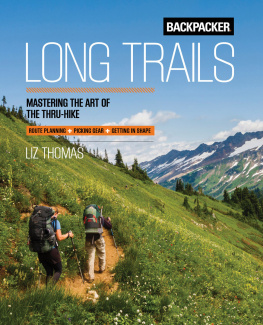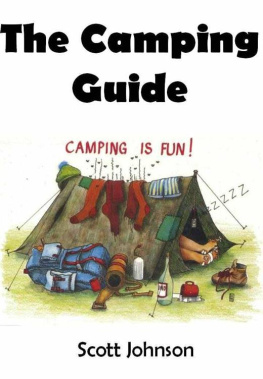Molly Absolon - Backpacker Winter Camping Skills
Here you can read online Molly Absolon - Backpacker Winter Camping Skills full text of the book (entire story) in english for free. Download pdf and epub, get meaning, cover and reviews about this ebook. year: 2015, publisher: Falcon Guides, genre: Home and family. Description of the work, (preface) as well as reviews are available. Best literature library LitArk.com created for fans of good reading and offers a wide selection of genres:
Romance novel
Science fiction
Adventure
Detective
Science
History
Home and family
Prose
Art
Politics
Computer
Non-fiction
Religion
Business
Children
Humor
Choose a favorite category and find really read worthwhile books. Enjoy immersion in the world of imagination, feel the emotions of the characters or learn something new for yourself, make an fascinating discovery.

- Book:Backpacker Winter Camping Skills
- Author:
- Publisher:Falcon Guides
- Genre:
- Year:2015
- Rating:5 / 5
- Favourites:Add to favourites
- Your mark:
- 100
- 1
- 2
- 3
- 4
- 5
Backpacker Winter Camping Skills: summary, description and annotation
We offer to read an annotation, description, summary or preface (depends on what the author of the book "Backpacker Winter Camping Skills" wrote himself). If you haven't found the necessary information about the book — write in the comments, we will try to find it.
Backpacker Winter Camping Skills — read online for free the complete book (whole text) full work
Below is the text of the book, divided by pages. System saving the place of the last page read, allows you to conveniently read the book "Backpacker Winter Camping Skills" online for free, without having to search again every time where you left off. Put a bookmark, and you can go to the page where you finished reading at any time.
Font size:
Interval:
Bookmark:
Chapter One
Choosing an appropriate destination for your firstor your one-hundredthwinter trip can make the difference between a wonderful experience and an arduous misadventure. There are lots of factors that go into making this decision, including your experience level, your mode of transportation, your physical conditioning, and your time frame.
It doesnt take much to escape civilization in the winter. Less than a mile from a road, you can find yourself alone, wrapped in the silence of the winter world. So you dont have to be overly ambitious on your first excursion.
Ask yourself the following questions to help make your choice:
Is this my first winter camping experience?
What are my winter camping options in this area?
Why do I want to go winter camping? Is my goal to interact with nature? Accomplish a specified objective like a peak climb or a traverse? Make turns?
Do I want to spend most of my day traveling or base camping?
Do I want to build a snow shelter?
Do I understand the hazards?

These kinds of questions will help you narrow down your options. If your goal is to ski downhill, your best bet may be to make a base camp from which you can venture out on day tours. If you are on snowshoes and your plan is to climb a peak, you may move your camp every day to set yourself up for an attempt on the summit. If you want to sleep in a snow shelter, you may choose to go a quarter mile from the road to dig in.

This book will go into hazards in detail later, but its worth thinking about what can hurt, maim, or kill you when you are looking for a place to go. The primary concerns for a winter traveler include cold temperatures, open water or dangerous ice, and avalanches. Look at a map or ask around at local gear shops or in online forums to find out what hazards you need to be prepared for before you venture out to your chosen destination. Check the weather. Be conservative, especially as you are gaining experience.
Travel in winter can be more time consuming than it is in the summer. Your speed will be highly variable and depends on your mode of transportation, whether you are breaking trail or following a groomed route, and the amount of gear you are carrying. Its easy to move rapidly downhill in the right snow conditions. In fact, you may find that a mountain that took you five hours to climb takes one hour to descend if you are on skis or glissading on a firm surface. All these variables make it very hard to put a figure to the number of miles you can expect to travel on any given day.

In the summer, most people hiking with a pack on a trail average 2 to 3 miles per hour and can easily cover 5 to 10 miles a day or more. In the winter, if you expect to break trail, halve the distance youd go on a summer trip for your first excursion. If you plan to be on a well-broken trail, your pace will probably be closer to your summer pace, but things will still take longer. You have to add and subtract layers of clothing to stay at a comfortable temperature; you need to eat more than normal to keep your energy up. Youve got more stuff to deal with, setting up camp takes longer, and going to the bathroom can be a full-on expedition, so even if your travel pace is close to your summer pace, start off conservatively and give yourself plenty of time. Remember, winter days are shorter too.
Keep track of how long things take on your first few excursions to get a sense of your travel speed. Make note of conditions, so you can factor that in the next time you head out. Snow is a lot more variable than a summer trail. So pay attention. The knowledge you accumulate over time will better prepare you for your next trip.
Beginner Tip: For your first winter camping trip, choose a location that is about one mile from the road and set up a base camp from which you can explore farther.
Snow Conditions
The condition of the snow is the number one factor in determining your travel speed. Snow comes in all shapes and textures. What falls from the sky is very different from what lies on the ground a week after the storm. Temperature, moisture, wind, aspect, and time all affect snow conditions. You may find yourself wallowing in sugary faceted snow where you punch all the way to the ground, or you may be able to walk across a frozen crust that supports your weight and makes the going easy.
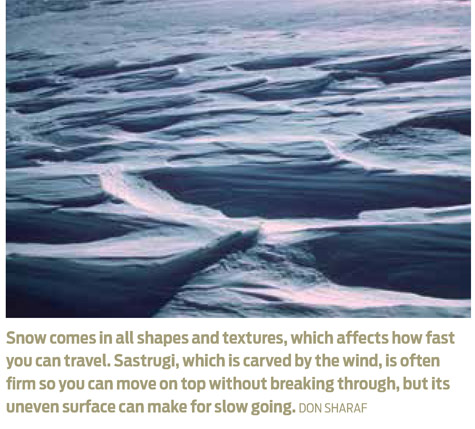
The only way to predict what kind of conditions you can expect to encounter is by paying attention to the weather and having a basic understanding of snow metamorphism. In simple terms, long, cold, dry spells transform snow into unconsolidated faceted grains that make travel hard. Think floundering in deep, loose sand. On the other hand, warm days, cold nights, or solar radiation can create a frozen crust that is good for travel in the morning, yet more challenging in the afternoon, as the snow loses its ability to support your weight when the crust melts. Temperatures in the teens and 20s that stay consistent tend to create a strong, well-bonded snowpack that is good for travel.
Beginner Tip: Make your first trip a few days after a snowfall and during a period when no storms are in the forecast.
Temperature
When choosing a destination, it is helpful to know the temperatures you are likely to encounter to ensure you are well-prepared. You can visit weather websites to determine averages and extremes for the area you plan to visit. You can talk to locals about the conditions you should expect to find. And you can choose your season to correspond to your goals.
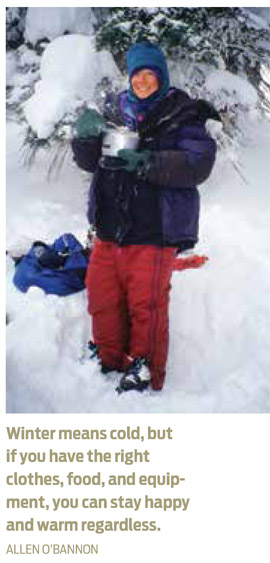
Beginner Tip: Pick a destination where you can expect temperatures in the teens and 20s. Too much colder and camping becomes more challenging. Too much warmer and youll find yourself struggling to keep dry.
Terrain
For many winter travelers, terrain is the determining factor in choosing a destination. Whether you prefer powder skiing or ice fishing will play a huge role in deciding where to go. Winter peak ascents have added challenge, and forests are transformed by winter into a magical place to explore. Snow can make going off trail easier than in the summer when vegetation and deadfall can make it difficult to hike through the woods.
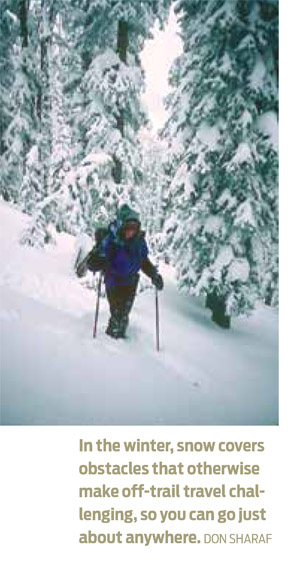
If you plan to travel on foot without snowshoes, look for open, windswept, or south-facing slopes where snow levels are minimal, making travel easier. Snowshoers do best on flat or gently rolling terrain, although more experienced snowshoers can tackle steep slopes with mountaineering-style snowshoes. Downhill skiers are going to want open slopes or widely spaced trees to carve turns through. Certain activities require groomed trails, such as skate skiing or skijoring, which will direct you to specific destinations and terrain.
Next pageFont size:
Interval:
Bookmark:
Similar books «Backpacker Winter Camping Skills»
Look at similar books to Backpacker Winter Camping Skills. We have selected literature similar in name and meaning in the hope of providing readers with more options to find new, interesting, not yet read works.
Discussion, reviews of the book Backpacker Winter Camping Skills and just readers' own opinions. Leave your comments, write what you think about the work, its meaning or the main characters. Specify what exactly you liked and what you didn't like, and why you think so.

